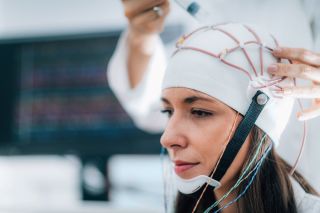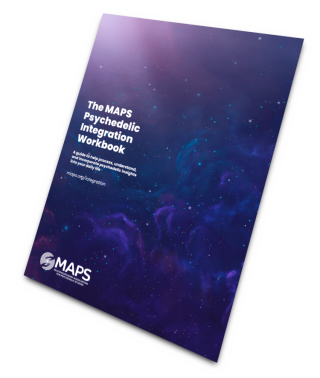The Role of Neuroplasticity in PTSD Recovery: How Ketamine Facilitates Healing

Post-Traumatic Stress Disorder (PTSD) can feel like an unending cycle—traumatic memories, heightened emotional responses, and a persistent sense of being stuck in survival mode. At the core of this experience are changes in the brain that make it difficult to move past trauma. However, cutting-edge treatments like ketamine therapy are offering new hope by leveraging the brain’s ability to heal itself through neuroplasticity.
This blog explores what neuroplasticity is, how PTSD disrupts it, and how ketamine facilitates the rewiring of the brain for recovery and growth.
What Is Neuroplasticity?
Neuroplasticity refers to the brain's ability to reorganize itself by forming new neural connections. It’s how we learn, adapt to new experiences, and recover from injury. In the context of PTSD, neuroplasticity is crucial for breaking free from deeply ingrained trauma responses.
However, PTSD often impairs neuroplasticity. Prolonged stress and trauma can damage neural pathways in regions like the amygdala, hippocampus, and prefrontal cortex—areas responsible for emotional regulation, memory, and decision-making. This creates a cycle of overactive fear responses and difficulty processing or moving past traumatic memories.
How Ketamine Enhances Neuroplasticity
Ketamine therapy works differently from traditional treatments for PTSD, which often rely on addressing serotonin imbalances. Instead, ketamine targets the brain’s glutamate system, directly promoting neuroplasticity.
Here’s how it works:
- Blocking NMDA Receptors: Ketamine blocks NMDA receptors, a key part of the glutamate system, which triggers a surge of glutamate activity.
- Stimulating Synaptic Growth: This activity promotes the production of brain-derived neurotrophic factor (BDNF), a protein essential for creating and strengthening new neural connections.
- Reconnecting Brain Regions: By enhancing neuroplasticity, ketamine helps repair damaged connections between the amygdala, hippocampus, and prefrontal cortex. This allows the brain to better regulate emotions, distinguish between past and present, and process traumatic memories.
Ketamine’s Impact on PTSD Recovery
For individuals with PTSD, ketamine therapy doesn’t just alleviate symptoms—it creates opportunities for deeper healing. By enhancing neuroplasticity, ketamine helps patients:
- Break Trauma Loops: Patients often report feeling “unstuck” from repetitive thoughts and heightened emotional responses.
- Reframe Traumatic Memories: Neuroplasticity supports the brain’s ability to reprocess memories, reducing their emotional intensity.
- Strengthen Coping Mechanisms: As the brain builds new pathways, patients often find it easier to adopt healthier ways of thinking and coping with stress.
What to Expect During Ketamine Therapy for PTSD
At Therapeutic Infusions, ketamine therapy is carefully tailored to each patient’s needs. During a session, the dissociative effects of ketamine allow patients to detach from their usual thought patterns, creating a safe mental space for healing.
In this state, the brain’s enhanced neuroplasticity can be leveraged for growth, whether through personal reflection or follow-up therapy sessions. Many patients describe this as a “reset,” helping them reconnect with hope and clarity.
Integration: Turning Neuroplasticity Into Lasting Change
While ketamine therapy initiates powerful changes in the brain, the work doesn’t end there. Integration—applying and reinforcing those changes—is key to long-term recovery.
Therapeutic Infusions encourages patients to:
- Engage in psychotherapy, such as trauma-focused CBT or EMDR, to build on the brain’s increased adaptability.
- Practice mindfulness and grounding techniques to reinforce emotional regulation.
- Maintain physical health through proper sleep, exercise, and nutrition, which support neuroplasticity.
A Transformative Approach to PTSD Treatment
For individuals who feel trapped by PTSD, ketamine therapy offers a pathway to healing through the power of neuroplasticity. By helping the brain rebuild and rewire itself, ketamine doesn’t just treat symptoms—it lays the foundation for lasting recovery.
At Therapeutic Infusions, we specialize in safe, professional ketamine therapy tailored to your unique needs. If you’re ready to explore a treatment that works differently, contact us to learn more.
Relief is possible, and healing may be closer than you think.
Disclaimer: The information provided in this blog is for educational and informational purposes only and is not intended as medical advice. It should not replace consultation with a qualified healthcare professional. Always seek the guidance of your physician or other licensed healthcare provider with any questions you may have regarding your medical condition or treatment options.
Integrating Psychedelic Experiences into Daily Life
Successful healing through Ketamine Therapy extends beyond the therapy session. Integrating the insights gained during treatment into your everyday life is essential for long-term growth and well-being. MAPS (Multidisciplinary Association for Psychedelic Studies) has made a wonderful interactive guide that provides practical tools and strategies to help you navigate and apply these transformative experiences in meaningful ways. Check out the guide below to enhance your healing journey and make the most of your Ketamine sessions.






